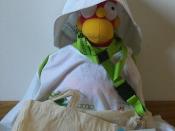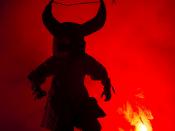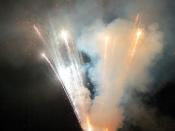Throughout The Odyssey, the author Homer uses many literary devices in order to enhance his writing. Towards the end of the epic poem in Book XXI, lines 431 through lines 499, Homer uses literary devices to truly depict the mood of the scene. In this passage, Odysseus, in disguise, takes part in the contest to win Penelope's hand in marriage. To the surprise of all the men, Odysseus easily manages to string the bow and shoot the arrow through all 12 axes, in turn winning the contest. Homer uses vivid imagery, dialogue, and figurative language in the form of epic simile and personification to add to the drama of the scene and the anticipation of the reader, as he or she knows that Odysseus' brutal revenge is about to begin.
Frequently in the passage, Homer uses vibrant imagery is to add a great amount of tension to the scene. When Odysseus picks up his bow again for the first time, imagery is very evident.
Homer illustrates, "And Odysseus took his time, turning the bow, tapping it, every inch"æthe suitors were now watching him,"à(Lines 441-450). Homer describes Odysseus in this way because he wants the reader to visualize the hero's actions so that he or she can feel the tension that is taking place. These actions are emphasized with the portion, "tapping it, every inch,"àbecause the reader can sense Odysseus' slow movements; slow movements are crucial to any tense scene. This quote is concluded well with the description, "The suitors were now watching him,"àbecause it is now obvious that the hero now has his enemies' attention and that the tension is building. Then, the passage and chapter are brought to a close with another piece of glowing imagery. This imagery is used to describe Telemakhos as he stands...


